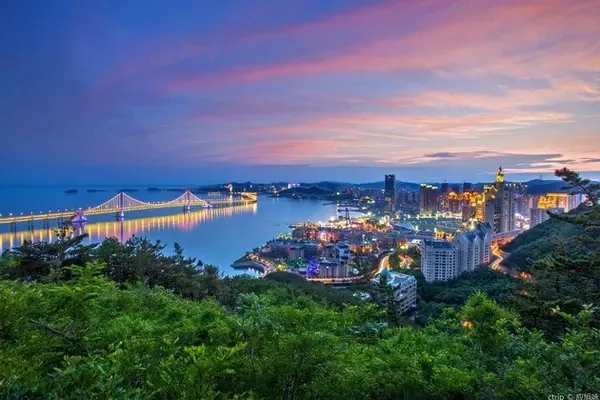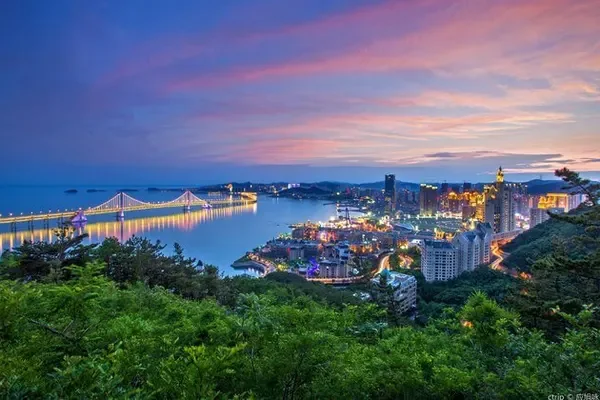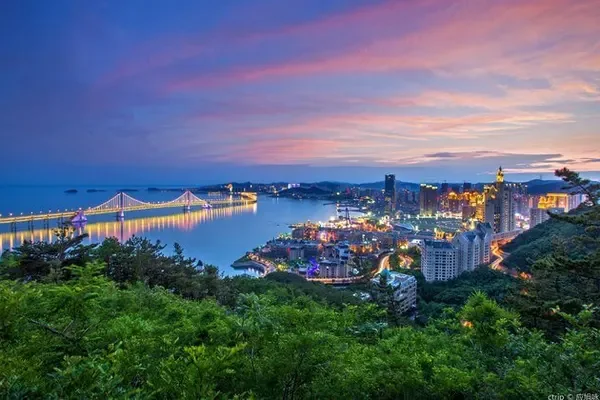On December 28, the last weekend in 2019, it was foggy, and we set off early in the morning to go to Siming Mountain. Siming Mountain has beautiful mountains, clear waters, long ancient roads, and fresh air, which attracts people to go to the mountain to explore the road again and again, and refresh their lungs with fresh air. When entering Siming Mountain, I have entered the mountain from Yuyao Liangnong, Fenghua Xikou, and Haishu Zhangshui many times. This time, I found a different way to enter the mountain from the Yuyao carriage stables, trying different roads and different scenery. Get off the high-speed Dayin, follow the provincial road to the car stables, turn left and follow the road into the mountain. In the stables, the fog is thick, the ground is full of silver frost, and the water vapor is floating on the water surface. The temperature in the nearby mountainous area is indeed lower than that in the urban area.



Entering the mountains, the green mountains, calm lakes, temples with yellow walls and red pillars, the scenery gradually becomes more and more beautiful, and you can stop to appreciate it from time to time.





The 18th bend of the mountain road passes through Xiaxia Village, Shangfang Village, Weng'ao Village... At the fork at the turn of Yishan Road, I don't know where the car is going. I stop to check and look up to see the pailou pavilions. The book "Shishan Zhongxiu" and "Shishan Zhongxiu" Baibuting". It turns out that Qiu'ao Village, the starting point of this hiking route, has arrived.


Qiu'ao Village is located in the hinterland of Siming Mountain, in the southeast of Lubu Town, Yuyao City, bordering Yaojiang River in the north and Liangnong Town, an ancient red town in the west. The village was built during the Northern Song Dynasty, and the two surnames of Qiu Fang lived together in the same village. The ancient village is long, with profound cultural heritage, elegant environment, and ancient roads. Song and Ming ancient roads connect Zhongcun. Danxia landforms, archways and pavilions, elephant waterfalls and lions, rock houses and cliffs, water bottle ring caves, and "Jianyan", which is known as the first stone in the Ming Dynasty, show the uncanny craftsmanship of nature. "Mother of Siming Mountain" carries a heavy red culture. The two glass plank roads reflect the modern atmosphere.
Park your car and enter the village, walk through the well-arranged houses along the green mossy path, and enjoy the old trees and houses in the village.



Walking through the village and climbing the road, I met an old man who was looking for the "Mother of Siming Mountain", and a middle-aged woman who set up a stall enthusiastically showed the way, and went with her to pay respects to the statue of "Mother of Siming Mountain". "Mother of Siming Mountain", there is a touching story: In October 1945, Tan Qilong, the political commissar of the East Zhejiang Column of the New Fourth Army at that time, and the secretary of the East Zhejiang District Party Committee, Tan Qilong, and his lover Yan Yongjie were ordered to evacuate to the north urgently. Their son Tan Dakai was only two months old. All the way to the north evacuation became a problem. When she was worried, a village woman, Dahua, stood up and was willing to go with the army to the north to raise a baby. At that time, she herself had a four-month-old child. In 1947, Weng Dahua died on Yimeng Mountain at the age of 29. It turned out that Weng Dahua not only took care of the son of political commissar Tan, but also became a glorious revolutionary fighter. Later generations carved statues in memory of her.

Walking along the path behind the monument to the west mountain, at the foot of the west mountain there is a huge independent boulder, which is located among the lush green bamboos. The local people call it "Jianyan"---the first stone of Siming Mountain. There is a mythical story about Jianyan: Jianyan was originally a stone of average size. Because of the outstanding people here, the mountains and rivers are spiritual, the birds are singing and the flowers are fragrant, and the environment is elegant. The piece of rock became a living rock, and Jianyan absorbed the aura of the essence of the sun and the moon and grew up day by day, alarming the mountain god. The mountain god feared that the Monkey King event would happen again, so he reported it to the Jade Emperor, and the Jade Emperor sent Erlang God to check it out. He said to himself, "If things go on like this, this stone will withstand the sky." The Jade Emperor ordered Liu Chenxiang to split it with a sky axe. Since then, the sharp rock stopped growing, and there was an ax in the middle. Walking up the artificial stone steps between the "Jianyan" and the green bamboo, you can see this "stone axe".


Continue to walk up the stone steps step by step, and you will see an upside-down vertical cliff, covered with ancient vines, that is, the rock house, which is said to accommodate one or two hundred people. According to records, during the War of Resistance Against Japan, the third and fifth detachments used this as a rear hospital, and generals such as Tan Qilong, Zhu Zhiguang, and Huang Ming once stopped here. There is a pool in front of the rock house, on which drops of water drip down like pearls, forming a beautiful water curtain, which is euphemistically called "Rock House Jade Dew".




On the upper right of "Yaowu Yulu", there is a pair of eagle and frog confrontation stones, and strange stones of different shapes can be similar to each other as you like.




Standing on the frog stone and watching, the opposite is a glass viewing platform, dotted in the green bamboo forest, and the right front is a glass plank road, inlaid on the cliff. Below the glass plank road is a cliff. Standing on the glass plank road, you can look down at the steep scenery. A winding and quiet artificial stone step path crawls at the bottom of the valley. The bottomless canyon seems to swallow everything. Once soft, raise your head and walk forward.





Go down the stone steps to the glass viewing platform, and meet a group of five tourists, standing on the viewing platform to play and take pictures.




Not far away is the "Lion's Head". Lion Rock is located in the middle of the mountain to the west of Qiu'ao Village. It lies on a naturally formed rock. Looking from a distance, it looks lifelike, like a living lion. There is also a beautiful legend about Lion Mountain. It is said that a lioness appeared on the mountain west of Qiu’ao Village and gave birth to a son. Back on the west mountain, but because of his eagerness to think about his son, he lay down on the huge rock halfway up the mountain every day. Year after year, people found that the lion turned into a stone lion, with his head facing southeast and looking down on his cub. Standing on the top of Lion Mountain, you can see the top of Jianyan and the panoramic view of the village. By chance, I met five tourists again. They went up to the top of the lion and watched Qiu'ao Village and Jianyan in the bamboo forest.



Walking through the winding path in the valley, climbing over the stone steps, there is a boulder with a typical Danxia landform beside the stone step, and there is another glass plank road on the right side of the boulder. You may have walked through a plank road, and the tension in your heart is significantly reduced when you walk again.





At the end of the plank road is a "lion's head-shaped" boulder obliquely straddling the side of the mountain. There is only a small gap between the boulder and the mountain, and you need to squat to pass through. The locals nicknamed it "Bieyoudongtian". When I approached the entrance of the cave and was about to pass through the cave, I really found out - there is no hole in the sky! Go to the opposite side to see the boulder, its shape changes.



Go down along the Shui Ping Ring Cave Trail, and look up at the glass plank road all the way to a pool—Shui Ping Ring Cave. A small tripod stands in the pool, and the green bamboo reflects in the water, revealing a beautiful shadow.




Walking down the mountain on the road, Qiu'ao Village is surrounded by Yudai Avenue on the left, Shixiang Road on the right, and Yinjian Mountain on the back, with red tile roofs, surrounded by green bamboos, and the environment is elegant. On the left side of the road is a dry "Elephant Waterfall".




Out of the village, along the Qiucun section of the Song and Ming ancient roads, the ancient tea-horse road is still long, passing the source of Lanxi, from which the source flows into a river.



Turning from the Song and Ming ancient roads to the Hou'aoling ancient road, we drilled through the shrub forest, passed through the bamboo forest that was blown by the strong wind, passed two big pine trees and a small reservoir, and listened to the sound of the stream. to Nakamura.







The purpose of the entry is that two streams of white water flow together and flow through the covered bridge. Due to the continuous rain in the early stage, the flow of water is large, and the river water is higher than the edge of the circular water collection channel to form a white round bead curtain, which is in line with the old houses and trees by the river. , can be regarded as a beautiful scenery.






A lazy black dog is lying on the ground basking in the sun, a group of ducks are playing by the river, an ancient bridge spans the river, and a white water waterfall is created due to the blocking of the dam. Since I passed through Zhongcun on my way back from Siming Mountain viewing cherry blossoms this spring, I just passed by in a hurry this time without stopping too much.





Nakamura is the transfer station of this walking tour, draw the first half circle, and then draw the second half circle. Enter the mountain from another valley, continue to follow the mountain road along the stream, and there are various forms of water flow along the way. Walking on the way back, it seems to be walking back on the road, the two valleys have too many similarities, a "sister road" on both sides of a hill.











Bamboos blown down by the wind can be seen at any time in the bamboo forest, and some of them are uprooted. Is it because the valley here is windy?




Walk through the bamboo forest all the way back to Qiu'ao Village.



